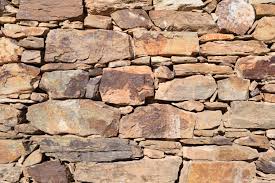Throughout the annals of human history, the use of rock as a building material has been a testament to its enduring qualities. From ancient civilizations to modern architecture, rocks have played a pivotal role in shaping structures that stand the test of time. In this article, we explore the timeless appeal of rock as a building material, examining its unique characteristics, diverse types, and the enduring legacy it leaves on the built environment.
Durability and Strength:
One of the primary reasons for the widespread use of rock in construction is its unparalleled durability and strength. Rocks are inherently resilient and capable of withstanding the forces of nature, including weathering, erosion, and seismic activity. This inherent strength ensures that structures built with rock as a foundation or primary material exhibit longevity. Providing a lasting legacy for generations to come.
Types of Rock Building Materials:
Rocks come in a variety of types, each with its own set of characteristics that influence its suitability for construction. Igneous rocks, such as granite and basalt, are known for their hardness and resistance to weathering. Sedimentary rocks, including sandstone and limestone, offer a diverse range of colors and textures, making them popular choices for architectural aesthetics. Metamorphic rocks like marble and slate combine durability with unique patterns, adding an artistic touch to buildings.
Aesthetic Versatility:
Beyond their structural benefits, rocks bring an aesthetic versatility that enhances the visual appeal of architectural designs. The natural colors, textures, and patterns found in different types of rocks allow architects and builders to create visually striking structures. The Taj Mahal in India is constructed predominantly with white marble. This exemplifies how the aesthetic versatility of rock can elevate a building into a work of art, transcending its functional purpose.
Cultural Significance:
Rock as a building material often carries cultural significance, reflecting the geological characteristics of a region and the traditions of its inhabitants. Indigenous peoples worldwide have employed locally sourced rocks in their constructions, resulting in structures that seamlessly blend with the natural landscape. The ancient Inca city of Machu Picchu is nestled in the Andes Mountains and built with local granite. Exemplifies the harmonious integration of rock with its surroundings.
Environmental Considerations:
While rock is a durable and aesthetically pleasing building material, there are environmental considerations associated with its extraction and use. Quarrying for rocks can have ecological impacts, disrupting ecosystems and causing habitat loss. Sustainable practices, such as responsible sourcing, recycling, and repurposing of rocks. Can help mitigate these environmental concerns and ensure the longevity of this valuable building material.
Modern Applications:
In the contemporary architectural landscape, rock continues to find innovative applications. Engineered stone, which combines crushed natural stone with resins, offers a customizable and eco-friendly alternative. Additionally, advanced construction techniques, such as dry stone masonry and geopolymer technology, are pushing the boundaries of what is possible with rock as a building material.
Challenges and Innovations:
While rock has stood the test of time as a building material, it is not without its challenges. Innovations in construction materials and techniques aim to address issues such as weight, transportation costs, and environmental impact. Lightweight aggregates, reinforced concrete, and 3D printing technology are just a few examples of how the construction industry is evolving to meet the demands of the future while preserving the timeless appeal of rock.
Conclusion:
The use of rock as a building material is a testament to its enduring strength, aesthetic versatility, and cultural significance. From ancient wonders to modern marvels, rocks continue to shape the built environment in profound ways. As we navigate the challenges of the present and look toward the future. The timeless appeal of rock remains a guiding force in sustainable and aesthetically pleasing construction practices.

